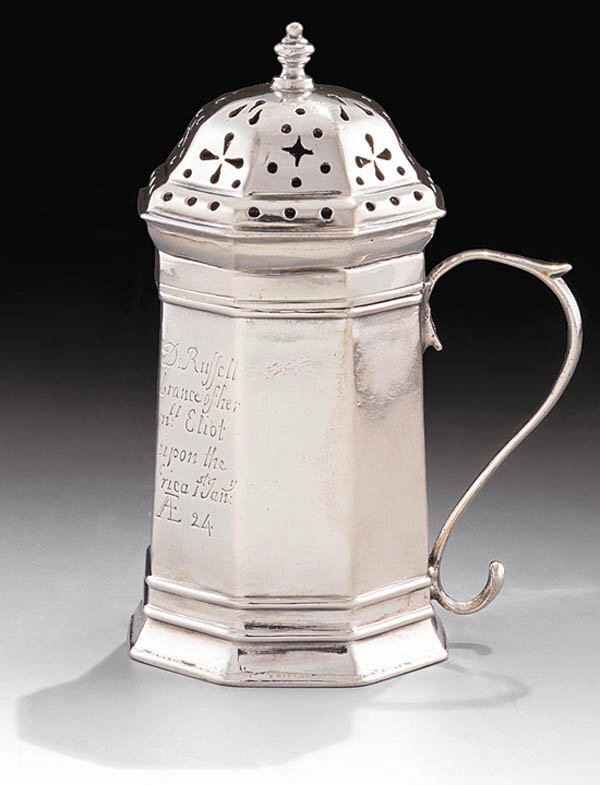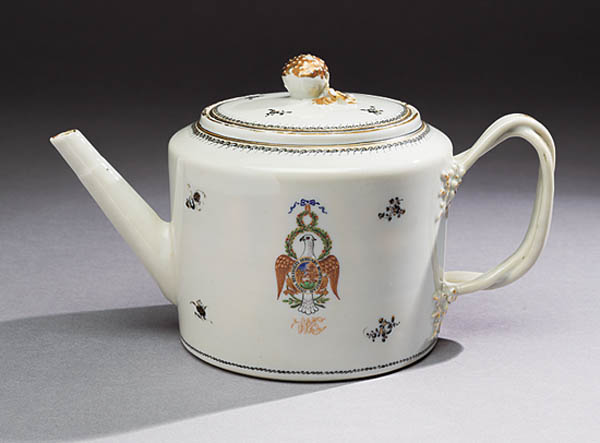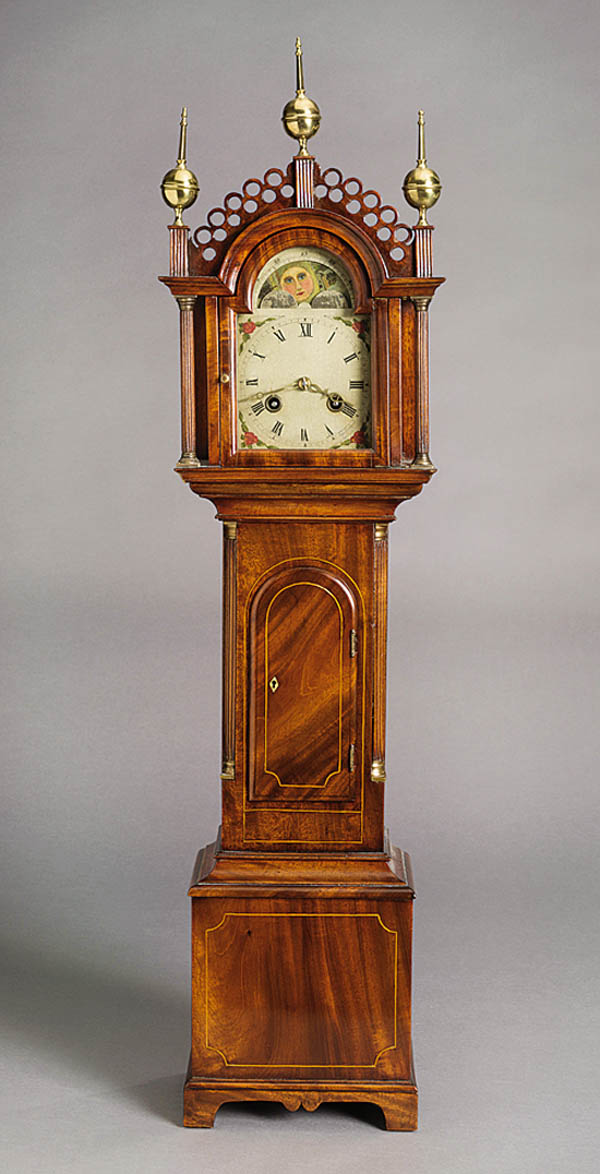Colonial Williamsburg Foundation Receives Its Most Significant American Decorative Arts Bequest
Joseph H. And June S. Hennage Collection Will Transform Holdings Of DeWitt Wallace Decorative Arts Museum
February 05, 2021
Theirs was a love story of many dimensions: a love for one another, a love of America and its decorative arts and a love of Colonial Williamsburg. The culmination of Joseph and June Hennages passion and evidence of their extraordinary philanthropic generosity is the bequest of their entire American decorative arts collection, which they amassed over 60 years, to the Colonial Williamsburg Foundation. The Hennage Collection is a singular gift that will transform the already renowned American furniture and furniture miniatures, silver and ceramics collections at Colonial Williamsburg. Totaling more than 400 objects of various media, the Hennage Collection also includes paintings, prints and antique toy animals, vehicles and figures. To honor this significant bequest, an exhibition of highlighted objects from the bequest, A Gift to the Nation: The Joseph and June Hennage Collection, will open at the DeWitt Wallace Decorative Arts Museum, one of the recently expanded Art Museums of Colonial Williamsburg, in the spring. Joe and June Hennage always sought objects of excellent quality and condition. Their gift consequently comes as an outstanding addition to Colonial Williamsburgs collections. It includes superior examples of furniture from Massachusetts, Rhode Island, Connecticut, New York, Pennsylvania and Maryland, as well as silver by the major East Coast artisans of that day and a variety of other materials, said Ronald L. Hurst, the Foundations Carlisle H. Humelsine chief curator and vice president for museums, preservation and historic resources. The Hennages decision to place the entire collection in a museum setting is a clear example of their public-spirited generosity. A Love Affair Begins In 1945, after being discharged from the U.S. Navy, Joe Hennage (1921-2010) returned to Washington, D.C., and soon thereafter founded Hennage Creative Printers. When he found himself in need of secretarial help in 1946, he hired June Stedman, (1927-2020) who had come to Washington to begin her career after finishing school in Virginia. They were married in 1947, and their partnership blossomed. In the late 1940s, they made their first visit to Colonial Williamsburg, and their life-long love for the historic city began. Their first collecting passion was not antiques but memorabilia relating to Joes hero, Benjamin Franklin, and books on printing, the profession the two men shared. Junes love of small objects extended to what she and Joe referred to as penny toys, or miniature animals, vehicles and figures, as well as miniature furniture, including tables, chests, chairs and beds. By the early 1950s, they were also collecting antique Chinese bronzes, porcelain, snuff bottles and netsuke. Although they did not begin attending the annual Antiques Forum, which began at Colonial Williamsburg in 1949, until later in the 1950s and more regularly in the 1960s, Joe often named this event as a great influence on them both. In 1965, Joe was asked to serve on the Fine Arts Committee of the State Department, a group formed to assist White House and State Department Curator Clement Conger in raising funds for the architectural renovation and furnishing of the diplomatic reception rooms, and remained a member and sometime chairman of the committee until 1996. By the early 1970s, the Hennages were collecting American antiques with increased fervor and attending Antiques Forum regularly. Joe and June were born-again patriots, and their excitement in being American was demonstrated by their passion for American furniture in the 18th century, said John A. Hays, deputy chairman, Christies Inc. They loved furniture that made a big statement, and their collection includes many pieces that boldly say, I am American. The Love Affair Blossoms Over the years, Joe and June gave the State Department several exquisite pieces of American furniture and helped to transform the State Department diplomatic reception rooms significantly. Joes involvement with this effort led to his being asked to head similar Americana drives for the National Archives and for the Supreme Court. During the Bicentennial year, the Hennages philanthropic spirit provided numerous extraordinary gifts of important objects to various American institutions, including Mount Vernon, Monticello, the White House, the National Portrait Gallery and Colonial Williamsburg, among others. The Hennages shared these gifts with such institutions, which are among the finest examples of American craftsmanship at its highest levels, not simply because they are masterpieces but in hopes of enhancing the publics education about its material culture. Although gardening was among Junes greatest pleasures, her interest in and deep knowledge of art and antiques led to her also serving as a member of the Department of State Fine Arts Committee. Colonial Williamsburg, however, remained a special place to both Joe and June where they could learn about and relive American historical events, and this unique interest caused them to use their resources to help the foundation flourish. They became charter and life members of the foundations highest-level annual giving group, the Raleigh Tavern Society, as well as members of the Presidents Council, a group dedicated to nurturing greater awareness of Colonial Williamsburg through philanthropic support. In 1985, the Hennage Auditorium at the DeWitt Wallace Decorative Arts Museum, one of the Art Museums of Colonial Williamsburg, was named in their honor, and in 2019, the foundation named a new gallery in the same museum the June Stedman Hennage Gallery in honor of Junes 90th birthday. By 1988, the Hennages completed a Georgian-style home in Williamsburg, which they named Hennage House, and they made this their home after relocating from Chevy Chase, Md. This home was where they lived with their extensive collections and viewed themselves as the custodians of the objects rather than their owners. Over time, they gave them to Colonial Williamsburg for safekeeping. Colonial Williamsburg inspires us all over time, but some take the message to new heights. That is true for Joe and June Hennage, whose Georgian-style house on South England Street reflects the Governors Palace in Williamsburg and whose stunning collection of masterpieces inside, the furniture in particular, carries the analogy to conclusion, said Philip Zea, president and CEO, Historic Deerfield in Massachusetts, and former curator of furniture at Colonial Williamsburg from 1999 to 2001. The Hennages significant legacy and generosity secure their presence in Williamsburg and make it possible to use the present tense when we think about them for some time to come. The Love Endures Joe and June Hennages passion for their American decorative arts and for Colonial Williamsburg led to the decision to bequeath their entire collection to the foundation upon their deaths because they believed in Colonial Williamsburgs unique ability to understand the objects significance to American history and make that story accessible to all. Their extraordinary assemblage of material culture is transformative. Already renowned for having the best in British and American fine and decorative arts from 16701840, the Wallace Museum will now make its furniture collection complete in its ability to show the full geographic spectrum from Maine to Louisiana through superlative pieces from major East Coast centers. Knowing of this promised gift has also helped to shape the American silver collection over the past decade as acquisitions were made with the Hennage collection in mind; these objects will now serve as the backbone of Colonial Williamsburgs American silver holdings. The Hennage Chinese export porcelain objects will provide the foundation with the first pieces from two different services bearing the insignia of the Society of the Cincinnati, a fraternal organization of American and French officers who served in the Revolutionary War. The miniature furniture from the bequest will nearly double the number of pieces currently in Colonial Williamsburgs collection (separate from its doll house furniture and childs chairs), and these objects, too, will be transformative in the variation of forms included in the Hennage collection, which includes blanket chests, chests of drawers, a high chest, a desk, chairs, tables, looking glasses, beds and tall case clocks, as well as the exceptional quality of many of the pieces. These are but a few examples of how this bequest will significantly enhance the way in which the Art Museums can interpret Americas enduring story for its visitors each year. According to Erik K. Gronning, senior vice president, senior specialist and head of Americana department at Sothebys, the Hennages formed a collection for the ages assembled during the zenith of the 1970s and 1980s collecting period. With great advisors, such as the Israel Sack firm, they acquired many American masterpieces. Their passion for their collection never ceased; it wasnt just a passing fancy for them. They were among the very first people to build a new home in period style to display their collection to its fullest. They did it all and didnt leave a stone unturned. They were ardent supporters of scholarship, and they believed it was their responsibility to further the knowledge about Americana and American history. As many have said, Joe and June Hennage were rare people, and it was a privilege to know and learn from them. Their dedication to American decorative arts was immense and their love of America even more so. Through this extraordinary bequest, this collection will live on for generations to come, and visitors to Colonial Williamsburg will have the opportunity to deepen their appreciation through these superlative objects of material culture. Additional information about the Art Museums and Colonial Williamsburg as well as tickets are available online at www.colonialwilliamsburg.org or by calling 855-296-6627. About the Art Museums of Colonial Williamsburg The Art Museums of Colonial Williamsburg include the Abby Aldrich Rockefeller Folk Art Museum and the DeWitt Wallace Decorative Arts Museum, both of which are housed in their newly expanded building that offers an additional 65,000-square-feet of space, 25 percent more gallery space and numerous enhancements to the visitor experience. The Abby Aldrich Rockefeller Folk Art Museum is home to the nations premier collection of American folk art, with more than 7,000 folk art objects made up to the present day. The DeWitt Wallace Decorative Arts Museum exhibits the best in British and American fine and decorative arts from 16701840. The Art Museums of Colonial Williamsburg are located at 301 S. Nassau Street in Williamsburg, Va. Images courtesy of The Colonial Williamsburg Foundation.




SHARE
PRINT